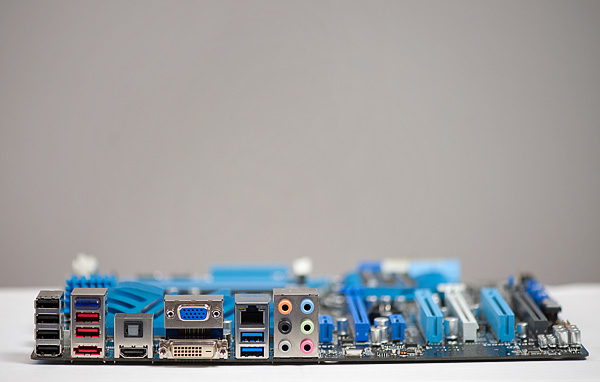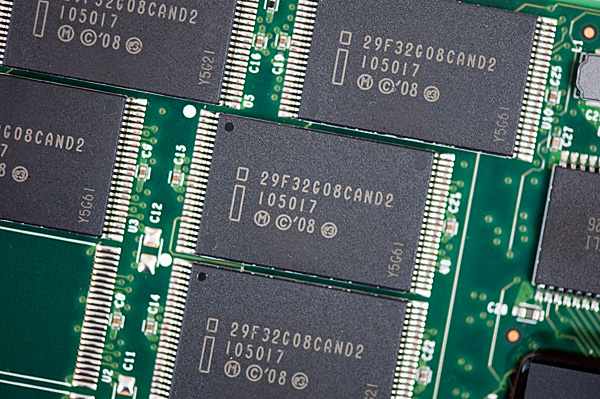Intel Z68 Chipset & Smart Response Technology (SSD Caching) Review
by Anand Lal Shimpi on May 11, 2011 2:34 AM ESTFinal Words
Intel's Z68 should have been the one and only high end launch chipset offered with Sandy Bridge. It enables all of the configurations we could possibly want with Sandy Bridge and does so without making any sacrifices. Users should be able to overclock their CPU and use integrated graphics if they'd like. While Z68 gives us pretty much exactly what we asked for, it is troubling that we even had to ask for it in the first place. With Intel holding onto a considerable performance advantage and a growing manufacturing advantage, I am worried that this may be a sign of things to come. It was strong competition from AMD that pushed Intel into executing so flawlessly time and time again, but it also put Intel in a position where it can enforce limits on things like overclocking. Let's hope that Z68 corrected a mistake that we won't see repeated.
Intel's Smart Response Technology (SRT) is an interesting addition to the mix. For starters, it's not going to make your high end SSD obsolete. You'll still get better overall performance by grabbing a large (80-160GB+) SSD, putting your OS + applications on it, and manually moving all of your large media files to a separate hard drive. What SRT does offer however is a stepping stone to a full blown SSD + HDD setup and a solution that doesn't require end user management. You don't get the same performance as a large dedicated SSD, but you can turn any hard drive into a much higher performing storage device. Paired with a 20GB SLC SSD cache, I could turn a 4-year-old 1TB hard drive into something that was 41% faster than a VelociRaptor.
If you're building a system for someone who isn't going to want to manage multiple drive letters, SRT may be a good alternative. Similarly, if you're building a budget box that won't allow for a large expensive SSD, the $110 adder for an Intel SSD 311 can easily double the performance of even the fastest hard drive you could put in there. The most obvious win here is the lighter user that only runs a handful of applications on a regular basis. As our tests have shown, for light workloads you can easily get the performance of an X25-M G2 out of a fast hard drive + an SSD cache. Even gamers may find use in SSD caching as they could dedicate a portion of their SSD to acting as a cache for a dedicated games HDD, thereby speeding up launch and level load times for the games that reside on that drive. The fact that you can use any SSD as a cache is nice since it gives you something to do with your old SSDs when you upgrade.
I believe there's a real future in SRT, however it needs to be available on more than just the highest end Sandy Bridge motherboards. I'd like to see SSD caching available on all Intel chipsets (something that we'll get with Ivy Bridge and the 7-series chipsets next year), particularly on the more mainstream platforms since that appears to be the best fit for the technology. I would also prefer a larger cache drive offering from Intel (at least 40GB) as it wasn't that difficult to evict frequently used programs from the SSD cache. The beauty of NAND is that we'll of course get larger capacities at similar price points down the road. Along those lines I view SRT as more of a good start to a great technology. Now it's just a matter of getting it everywhere.












106 Comments
View All Comments
µBits - Monday, July 11, 2011 - link
http://download.intel.com/support/motherboards/des...System Requirements:
For a system to support Intel Smart Response Technology it must have the following:
codedivine - Wednesday, May 11, 2011 - link
I am interested in using Linux and I am wondering about various things:1. Will it work under Linux? Can I configure it from Linux?
2. Is it file system dependant? I guess it is not.
3. Whether it will work on multi-OS machines. For example, what happens if I dual boot Windows and Linux?
Unrelated to Linux is, does this scheme get confused by say using lots of VMs?
Penti - Wednesday, May 11, 2011 - link
No, so called fake raid (software raid) that the chipset/drivers supports do never work in Linux. RST do not work under other OS's then Windows. Mac and Linux will have to use the built in software raid rather then the none existing driversbased one. And will lack all support for SSD caching.VMs usually write to a virtual hard drive (file) that saves the data to the disk. That should be absolutely fine.
Mulberry - Saturday, May 21, 2011 - link
but to the question on dual booting:Can you dual boot eg. Win XP and Win 7?
headhunter00 - Sunday, August 7, 2011 - link
well, you can always set the root partition on the ssd, by creating custom partitions during installation, and set the resource hogging partitions such as /var and /home on your hdd. this way, all the binaries and libraries load from the hdd. if you don't have enough space on your hdd to do that either, then you are out of luck. thats the closest you can get to ssd caching in linux. ofcourse there is a patch for the kernel to do ssd caching natively, but its pretty outdated and probably not compatible with your hardware. to do ssd-caching in windows with linux, you have to preserve some space on ssd to do so.MonkeyPaw - Wednesday, May 11, 2011 - link
The virtue interface is awful. Looks like the ugly tree fell on that android girl.sunbear - Wednesday, May 11, 2011 - link
Consumer nases (readynas, qnap, etc) could really benefit from this. Flashcache (http://planet.admon.org/flashcache-caching-data-in... released by facebook also looks interesting.fitten - Wednesday, May 11, 2011 - link
Can you have an SSD as your boot drive, then a large HDD (typical configuration... OS/apps on SSD, data/etc on HDD) and then have yet-another SSD enabled with SRT for caching the HDD? Seems like the best of both worlds (other than cost).swhitton - Wednesday, May 11, 2011 - link
I reckon that setup would almost certainly work fine.What I'm wondering is whether you could use a single SSD partitioned so that part of it was a boot drive and the other part was a cache for a HDD. Such a setup would solve the problem of the 120gb SSD not being quite the right size for any particular purpose.
A 60-80gb partition with Windows and apps on it and the remaining space used as a cache. This would avoid the problem of having to symbolic link Steam games and so forth, while also not requiring you to buy two SSDs in order to have a boot drive and a cache drive.
Anand did mention that a cache drive could be partitioned so that only part of it needed to be used as a cache. Just not sure if there would be any issues that might arise with using the remaining partition as a boot drive.
Thoughts anyone?
y2kBug - Wednesday, May 11, 2011 - link
Here is a quote from vr-zone.com’s review (http://vr-zone.com/articles/first-look-msi-z68a-gd... ) on SRT: “All existing partitions on the SSD must be deleted before it can be used as a cache”. This makes me believe that using oneSSD for dual purposes (boot drive and SRT at the same time) is not possible. I really want to hear Anand’s last word on this.